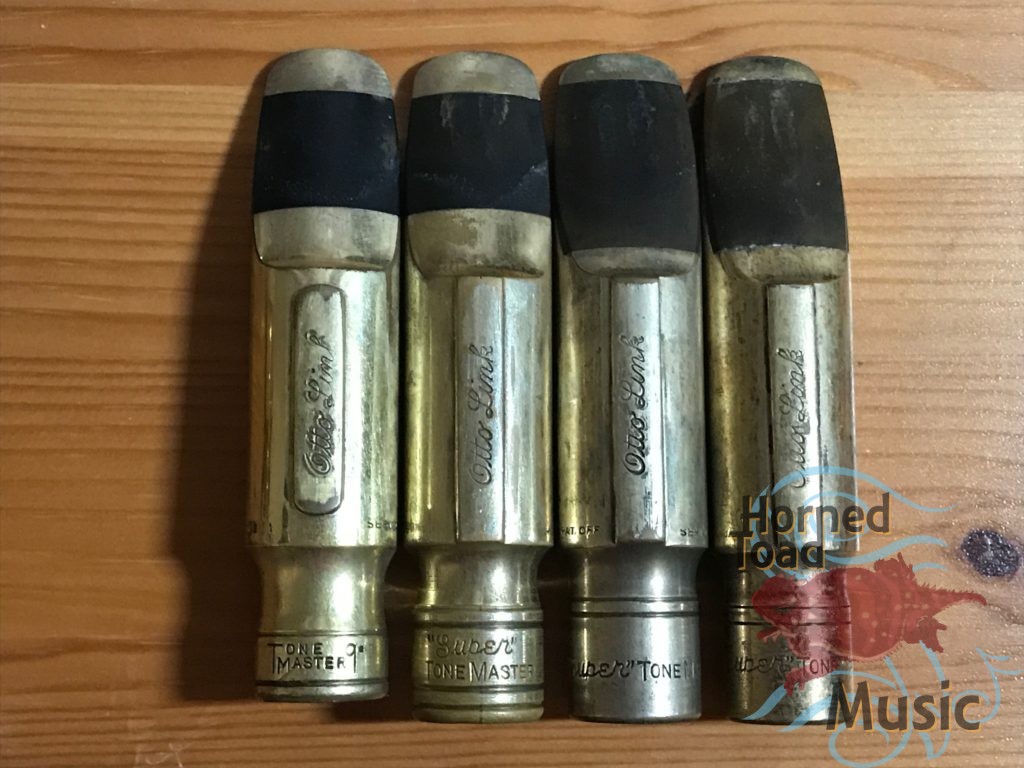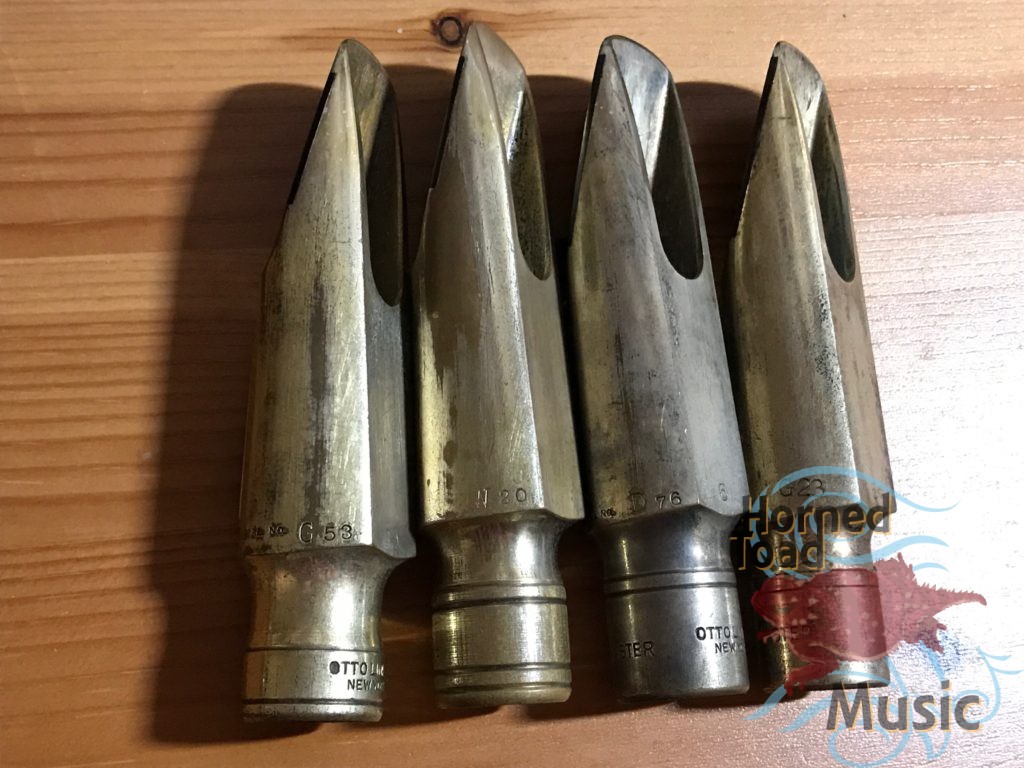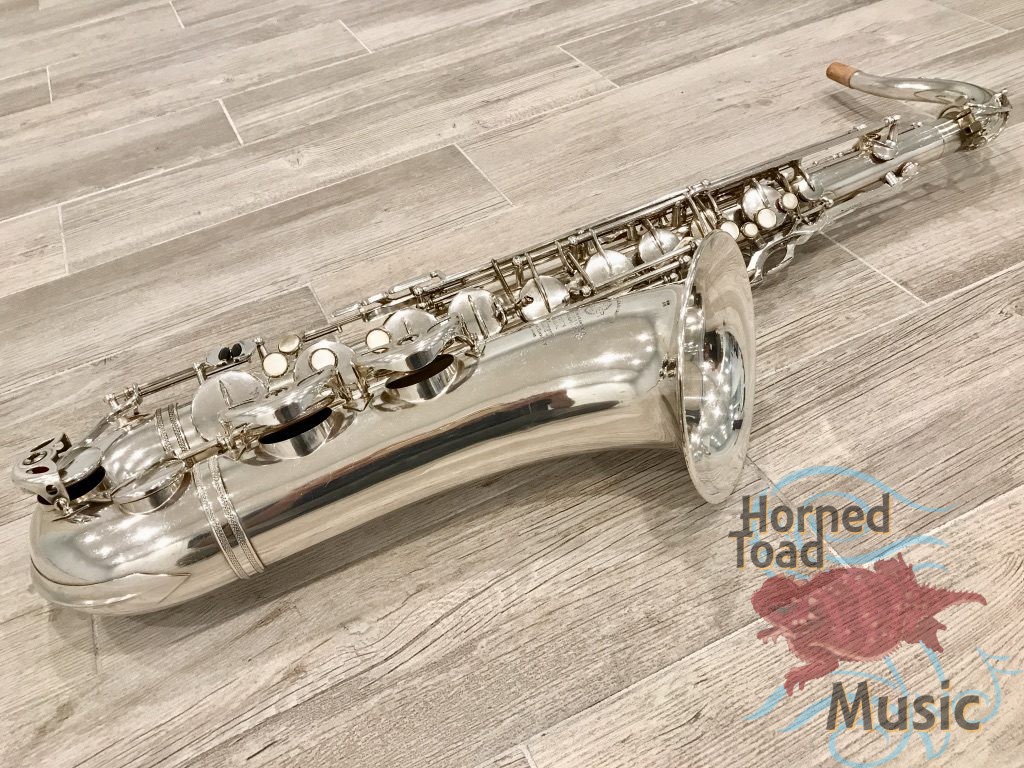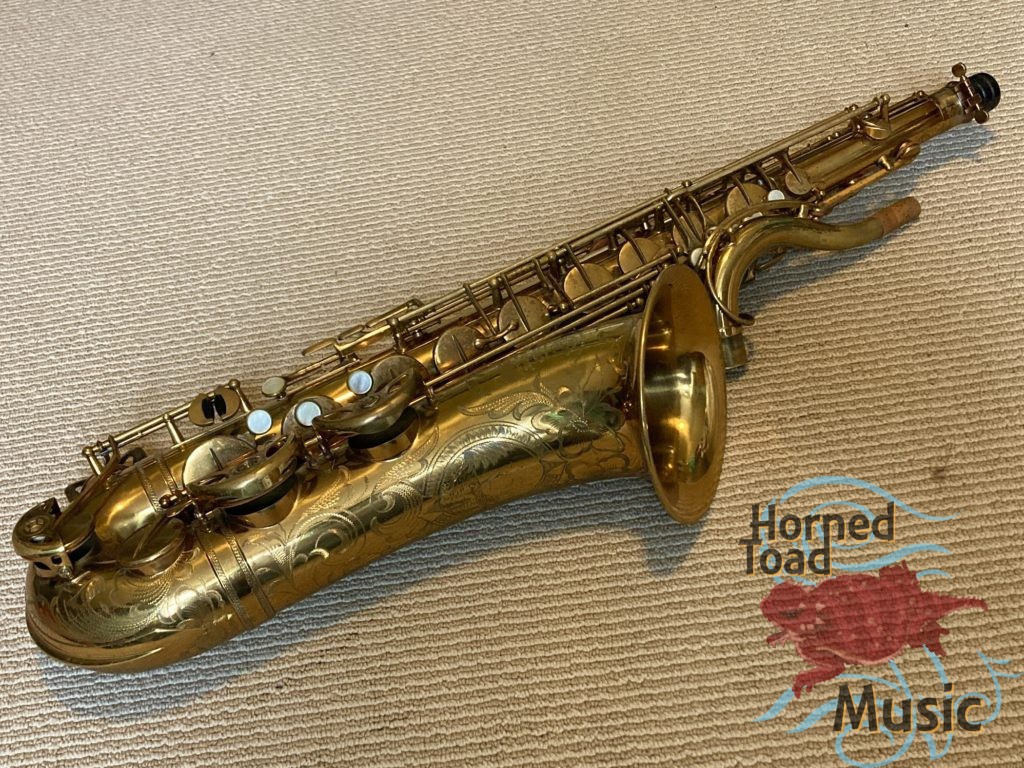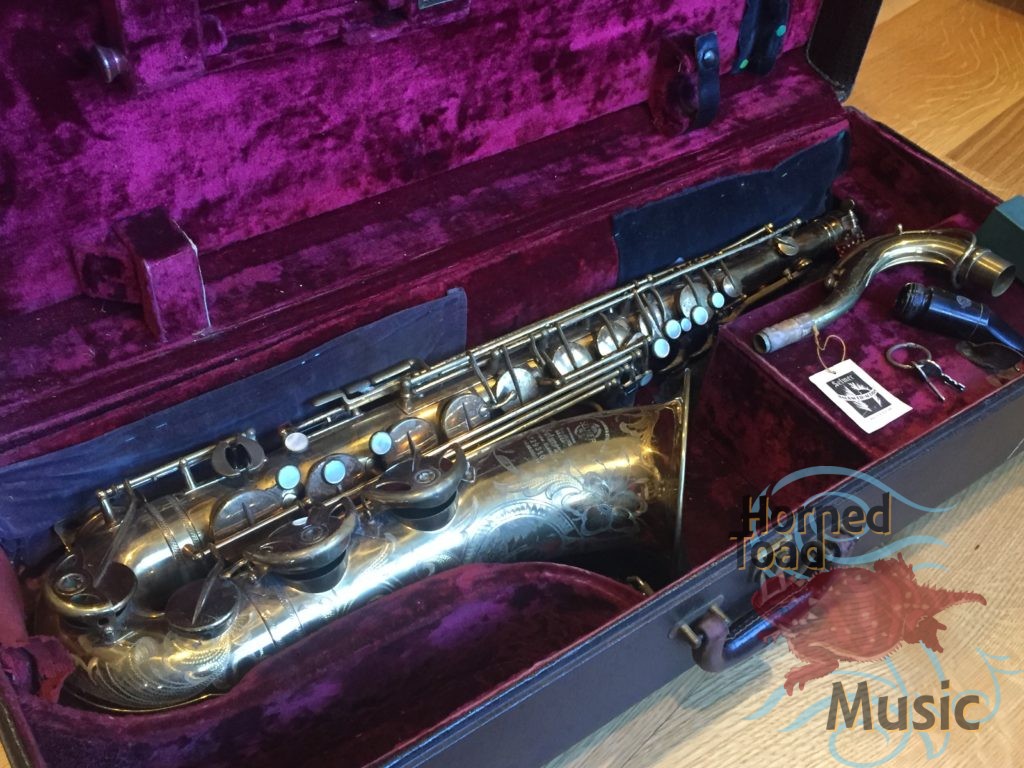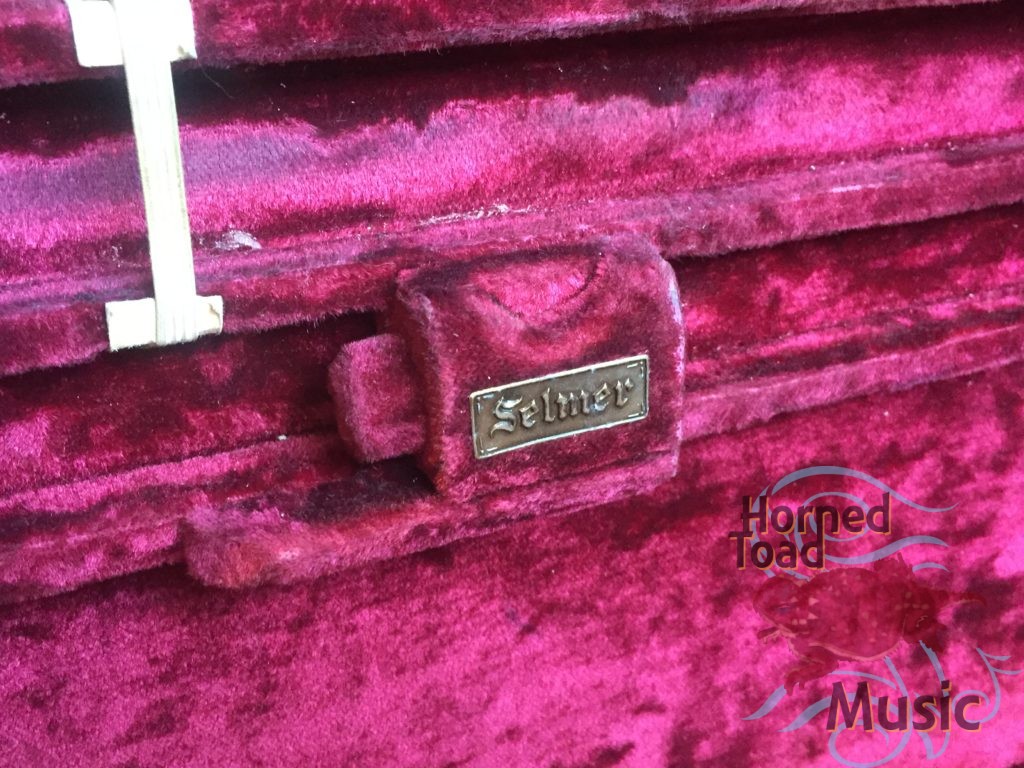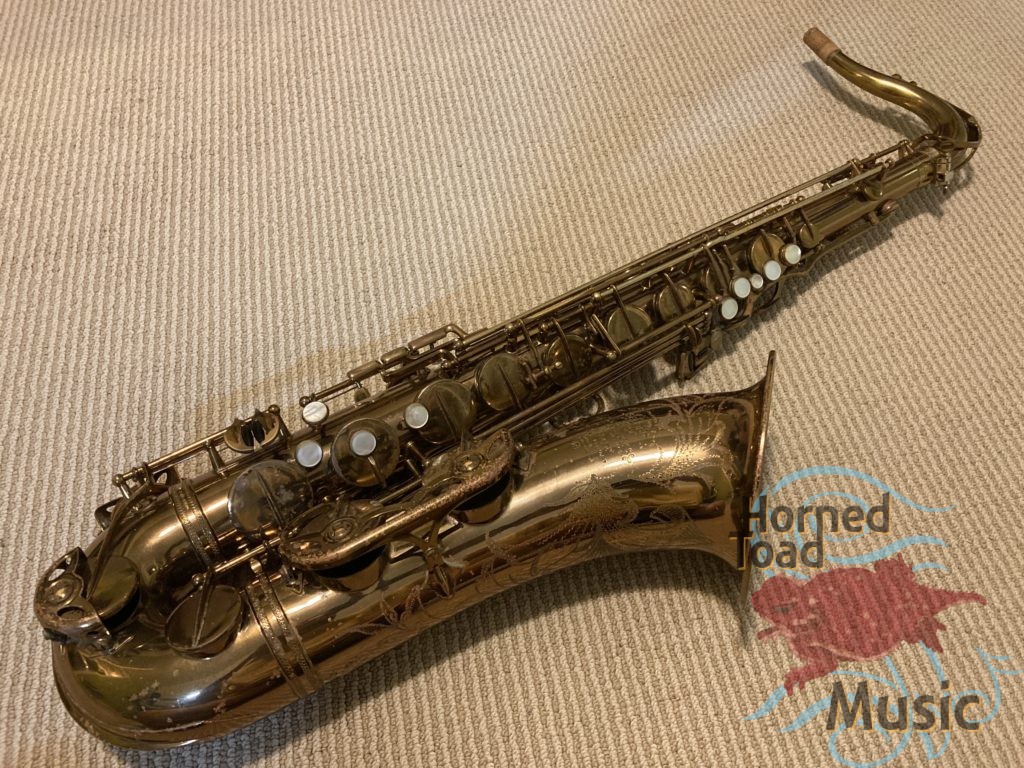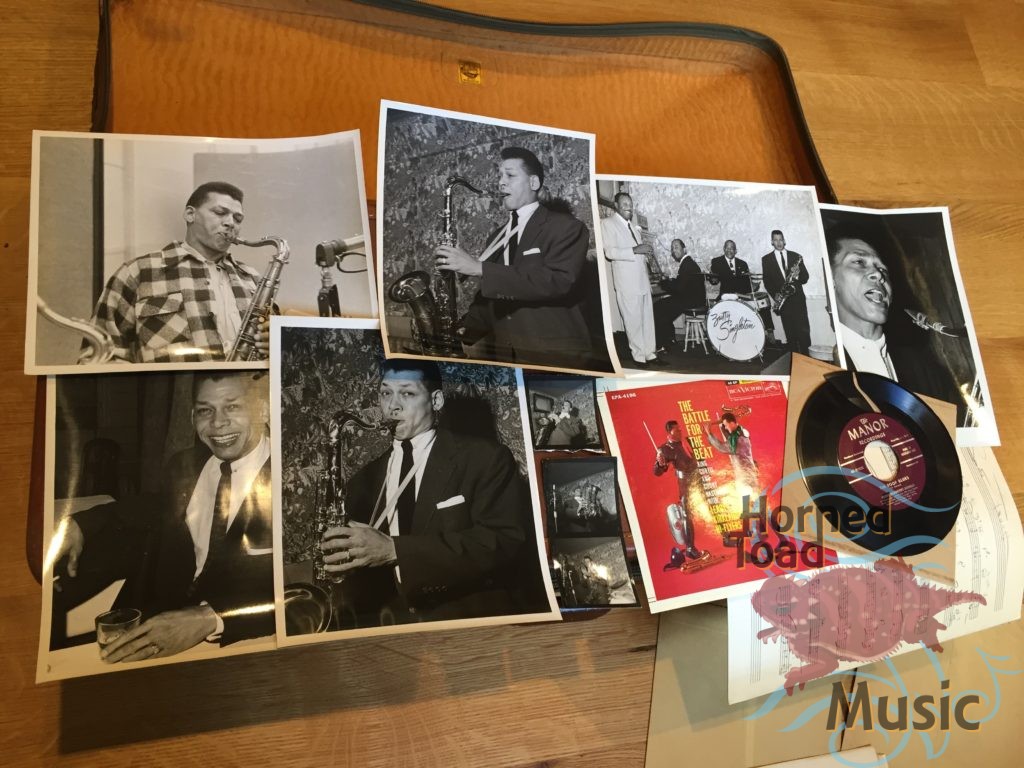It took me some years to get to this horn, but now it is finally finished. This horn specifically was a lot of careful work but in the end very well worth it. Hear the before and after vids and take a look at the original article for repair/restoration pics!
Category Archives: Vintage Saxophone Articles
Comparison & Review; Yamaha 82Z vs. Some Vintage Selmer Tenors
This is a fairly casual review/comparison of the 82Z vs a number of different vintage Selmer tenors. I really made this video for myself to hear the differences (which are not hard to notice) and because I have a number of folks who seem to appreciate my viewpoint. As usual I am rambling a bit and blowing probably too much noise but I did clear up a few of my ideas at least for myself and maybe someone else.
0:04 intro and 82Z comparison discussion
1:34 82Z playtest
3:37 SBA 45k playtest
5:33 MK VI 87k playtest
7:27 SBA 41k playtest
9:45 MK VI 70k
12:06 82Z more playtest
13:13 82Z discussion/comparison/conclusions
24:21 82Z left/right hand examination
25:19 MK VI 87k left/right comparison
26:02 conclusion etc
Otto Link “Missing Link” 4-Ring Transitional Rare Mouthpiece (Part 2)
Horned Toad’s Vintage Otto Link Survey Videos!
Marin Spivack, veteran restorer of vintage mouthpieces takes an in-depth journey through the different models of vintage Otto Link tenor (because they are a lot less famous for alto) saxophone mouthpieces. We will cover the 1940’s to the 1970’s. Not ALL models and examples will be featured but plenty of detail based on what is available. Be prepared for corny humor and some time wasting, it’s a bit long, but you may learn to identify and understand the differences in the models. There may be mistakes and contradictions, we do our best. This is for the true nerds and enthusiasts.
Part 1
Part 2
Part 3
Part 4
Part 5
Indepth Discussion on Realities of the MK VI and Vintage Selmers
Long and detailed discussion of a kind of common strawman overly hyped discussion of the “The MK VI” saxophone based on years of experience.
This was initially made in response to a video that is posted in the description
( https://www.youtube.com/watch?v=puApTzibuHM ) . Many hunters of such vintage Selmers, students and just those wanting to learn more may find this helpful.
Yusef Lateef’s amazing 45xxx Super (Balanced) Action tenor, restored!
I was very luck to be able to purchase this amazing instrument from the estate of Yusef Lateef, along with the paperwork of provenence. I have some friends in the repair biz who were also around Rayburn’s music (in Boston) years back and remembered Lateef bringing this horn around for service more than 30 years ago as well, so we know he kept it for a long time.
This project spanned about two years as some parts of it were slow and time consuming and I was also busy with a move and some family obligations during that time.
It was in a bit of disrepair when I got it, with some kind of odd insults and injuries, but structurally it was in very fine shape. Somehow, somewhere, the neck receiver had been sheared into three pieces two of which were broken clean off the horn. The strangest part is that this break, did not effect the body tube in any way, in any area. It was very straight with only some minor dings, very odd. I have yet to understand how that happened and never will I guess. The pads were old and crusty of course, it was not playing. Some screws were missing or mismatched and it was at least as far as proper saxophone service is concerned, just rather insulted.
In my imagination, I can see Yusef Lateef buying this horn in Europe while on tour and either it already had the broken neck receiver or that happened while in his possession. I can imagine him thinking “this is one of those special horns that ‘Trane was bugging Wayne Shorter to get” (see the interview with Shorter where he tells this story about Trane’s insistence on him getting just such an early SBA.) and him keeping it until he can find the right person who could handle the weird repair.
Maybe he knew what a great horn it was, generally I would trust the judgement of instrument quality to Yuself Lateef above almost anyone. I imagine he had to know what a special horn this was to keep it for so many years.
Anyhow with a lot of specific work and time I have finally restored this to very nice working order, it feels like a Ferrari now, set up with rather hard-ish pads and a set of original American-market Tone-X metal SBA resos from the 1950’s that I had here. It just blew my mind as I just played fresh one day after the overhaul, while ti is still settling in. It is very compact and aggressive in tone, barks, is very powerful and has an otherworldly biting bright ring to the sound that makes it sound like it is amplified. This is what the rare and great SBA’s do. I was a little rusty on the video but at least it was fresh and surprised me more than you who will watch it I believe.
And here in a less boomy room:
Unbelievable Original Selmer Balanced Action Tenor Saxophone
This is the story of an exceptionally rare and wonderful all original balanced action 29xxx that I was lucky enough to get. I got it in raw condition with all original pads, case and a bunch of original case accessories. I did a full restoration from the ground up and it is a truly phenomenal horn, now with original Tone-X resonators on a horn made when there were very few microphones, so this is very loud. A real original balanced action like this is just about impossible to find, most were relacquered long ago. This is in apex playing condition and it’s stunning as well. Read and see below.
As found:
Restored:
Original article (pre-restoration):
This just came in here and required immediate photographing. An original intact Selmer Balanced Action is a very very rare creature. This particular horn has had no significant damage or alteration, has original pads and is basically a used version of exactly as it came from Selmer in the 1940’s.
This has as well, the original Selmer case, the first version of the trey-pack design, with original keys and “Balanced Action” tag as well. The original “table B” mouthpiece is also in mint condition.
The horn obviously has some wear and some more on the left side, but there are really very few original examples to be found anywhere at this point, especially with American engraving pattern and lacquer. I have not played it yet, requires some key adjustments and it will surely be a moldy experience with this old pads but I am curious. It will need a full restoration but It is sure to be great.
What a feast for the eyes!
These pics are about as close to the actual color as I could get them-
Amazing Jazz History Collector’s Selmer MK VI Tenor #70xxx Belonged to “Count” Red Hastings, Member of Louis Jordan’s Band and Other Fames
This is a truly amazing piece and find, Selmer Tenor MK VI #70xxx in original U.S. engraved gold lacquer that has turned rather dark. This horn is from the estate of “Count” ‘Red’ Hastings, (Lowell Hastings).
“Hastings was active in the New York jazz scene from the late 1930s; first recordings were made in 1939 with the Savoy Dictators (“Rhythm and Bugs” (Savoy Records), with Alfred “Chippy” Outcalt, Clem Moorman, Al Henderson and Bobby Plater). In the following years he played with Tiny Bradshaw (1944), Bob Merrill (1947) and participated in recordings of Sarah Vaughan with (“I Cover the Waterfront”). In 1948 he recorded under his own name for the label Gotham the title “Begin the Beguine” and “Candid Yam” on; In another session in the early 1950s with Cliff Smalls, Keter Betts and Shep Shepherd, songs such as “Minor in the Diner”, “Diga Digo Doo” and “She’s Funny That Way” were created, but initially remained unpublished.
From 1949 he worked with Earl Bostic, Panama Francis, Illinois Jacquet, Lucky Millinder, Bull Moose Jackson, Louis Jordan, Sammy Lowe, Sy Oliver and Louis Metcalf, as well as accompanying musicians of vocalists such as Annie Laurie, Varetta Dillard, Ace Harris, Wynonie Harris , Connee Boswell, Little Willie John, Bobbie & Ronald, Earl King, Big John Greer, Jerry Dorn, Joe Medlin and Jimmy Witherspoon. In 1958, an EP of King Curtis and Count Hastings with Leroy Kirkland’s Hi-Flyers: “The Battle for the Beat” (RCA Victor) appeared. [2] In the field of jazz he was involved between 1939 and 1959 in 55 recording sessions. he wrote the number “Salt Lake City Bounce” with Tiny Bradshaw.”
(https://de.wikipedia.org/wiki/Lowell_Hastings”
Included is the original trey-pack case in decent condition with a slightly functional zipper, as well as the original case cover (in ratty but fitting condition). Also included are numerous original photos (showing him playing THIS HORN) as even music arrangements probably used by famous names written in his own hand. We even have a receipt for an overhaul ordered and signed for by Louis Jordan himself. This is a treasure trove of thrilling history.
The horn itself is in excellent condition with normal lacquer wear from age and use, scratches and some very minor dings, no serious damage. The neck shares the original serial number and has a few scratches but structurally it is near perfect and still looking very nice.
** I have finally gotten around to restoring and overhauling this horn; full set of original Tone-X resonators, fresh harder pads, all toneholes dressed, key fitting, minor dings addressed etc. It was actually a rather extensive job even though the horn was not in bad shape at all. The result is a LOT different than I expected, much brighter and more powerful than I imagined. This had to have been specially chosen, as it is a very uniquely interesting horn. Hear it here:
Hear “Count” Hastings here (check out that tenor sound on the solo on second video, that can only be THIS horn, in those years and with that sound:
*********
Extremely Rare Otto Link Late Model Tonemaster 9* Special Tenor
I’ve never seen one of these before, ever. I was not aware they existed. This is an original Tonemaster, late model (bluetrane era) 9* measuring at 0.112 inside the tip rail so likely an actual 0.115. Obviously this was a special order. I’ve been doing a little cleaning up on it and will report back once I know how it plays. WOW!



******
*******
Characteristics of Vintage Selmer Tenor Saxophones, MK VI and SBA by Serial Number Period
I originally wrote this a while back on SOTW and it has proven useful and accurate for many people. I’ve decided to post it here for easy searching and preservation. Enjoy:
****
It really depends on one’s taste. It is not so much that particular serial number ranges are better than others but that they have different bore designs and offer different tone color or response than others due to that. Below is for tenors, I don’t know altos well enough.
Some of the tendencies are very reliable, some are not.
Mid 50k to mid 60k still have a lot of the color of late SBA tenors. They are in my experience, without exception, very warm players. They tend towards bright and fast response and have a type of elastic expansive bounce to the response. They also tend towards spread, but that definitely has variance.
Mid 60k-late 70k is a progression from increasing focus and power to possibly more spread at the later end. Still very warm, but more aggressive, less elasticity in the response than the 60’s. 70k tenors are all over the map, lots of experimentation going on in this period.
Early 80k is in my experienced a powerfully loud and fairly spread horn with an edge when pushed and a lush low end, with a bit of resistance to push against.
mid to late 80k tend to be significantly more focused, brighter, with very little resistance, if any.
80k series also progresses from having perhaps 2/3rds of the warmth of the 60-70k’s to having maybe 1/2 of it by the end, and then less later. The warmth is traded for edge and power in this case.
90k are heading in the same direction, but share the same experimentation situation as the 70k tenors; they sound similar to 80k tenors but the air pressure is different, some are successful, some are not. 100k – mid 120k is a solid run of focused punchy bright and compact balance. 130-mid 140k has it’s own character, maybe more spread than 120’s, big sound, and a power and balance that kind of culminates around 140k which is reputed to be a revisit of the bore size of the 80ks.
150k-mid 160k is the last bits of the vintage feel and by then only a tiny bit anyhow, they are solid top of the line instruments, and are very functional most of them, quite reliable in my experience, but more generic as well. After mid 160k they can be extremely consistent and extremely generic, and good instruments as well, but simply not the vintage vibe.
In terms of the vintage vibe, the most consistent periods in my experience are 50k, mid 60k, and 80k. That does not mean they are the ‘best’, just the most reliable in terms of their response. 70k you can get an absolutely excellent horn, but a few numbers later something totally different, same goes for early 60k, 90k, and all the SBA’s (LOL).
There are great and unique horns in every period, and one man’s junk is another man’s treasure; you might love the horn I think is crap, but these are just my impressions from playing a lot of them. The idea that there are ‘dogs’ in every period is, in my experience, not true. Some period have no bad horns at all.

